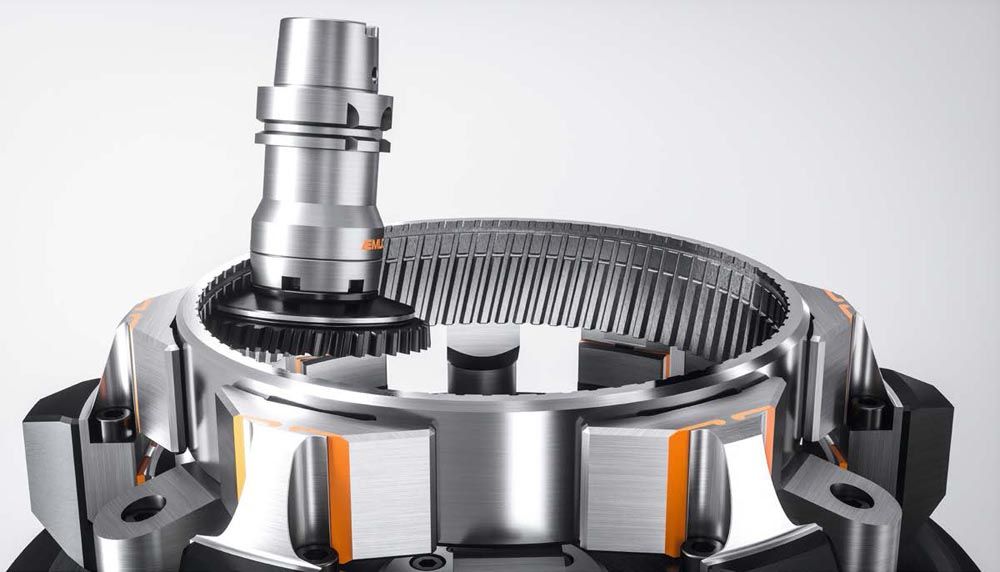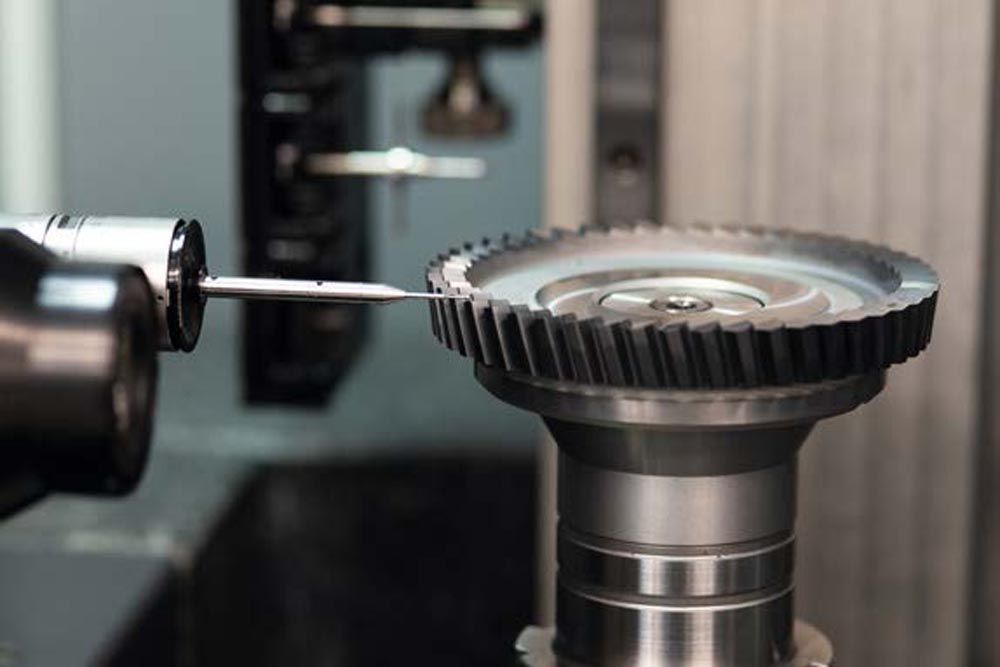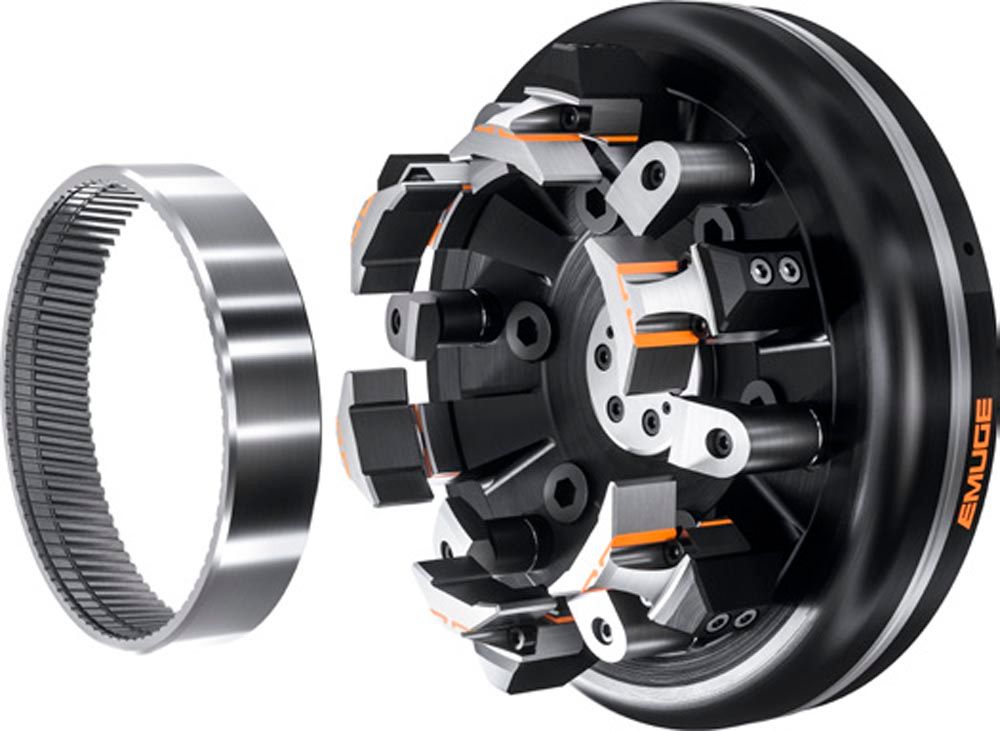Customize Gear Skiving for Precise, Efficient Gear Cutting
The advantages of gear skiving on machining centers
Emuge-Franken offers complete gear-skiving solutions including tooling, clamping, and process optimization. (All images courtesy of Emuge-Franken.)
Producing many slots on a gear is a challenging process that requires high accuracy. Manufacturers need to achieve high accuracy while being as productive as possible, cutting slots fast. Traditional gear-cutting processes include broaching, shaping, hobbing, or using a specialized end mill. Although effective, each of these methods has disadvantages.
Broaching requires special broaching machines that are very expensive and difficult to set up. Each part must be set up individually, which can take multiple hours. Depending on the complexity of the part, each broach can cost thousands of dollars.
Shaping is an older method of skiving without spindle or part rotation. Shaping is essentially broaching but using a circular tool. As with broaching, shaping requires a specialized shaping machine.
Once again, hobbing requires a special hobbing machine. Hobbing is a very efficient way of machining gear teeth, but the main downside is having to use a specific hobbing machine. Also, the hobbing cutter can be very expensive.
In addition, gear manufacturers may use a special form end mill to cut gears for applications where skiving cannot be applied because it is not involving the ID or OD of the teeth, but this strategy can only cut one tooth at a time. When using an end mill, you can use the same machine and setup for other features on the part. One advantage of this strategy is that it can be used on gear teeth that cannot be machined in other ways. An example of this is a Hirth spline application, where two Emuge special form end mills are efficiently cutting the gear teeth on the face of a cylinder in just one operation.









